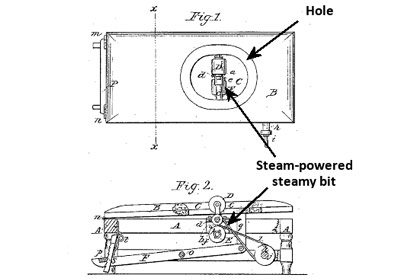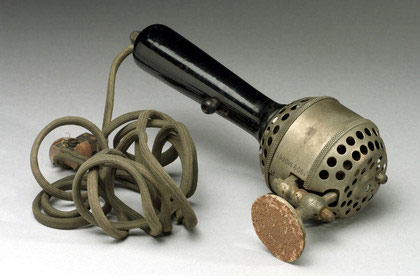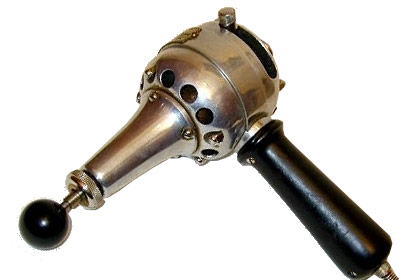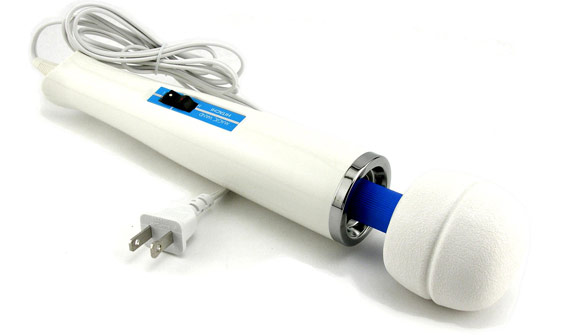
Lean
Think big, start small, learn fast
The vibrator was born as a medical instrument intended for treating “hysteria” in women. This was a vague illness. Among its symptoms were anxiety, irritability, pain or tingling in the lower abdomen. In order to be diagnosed with hysteria, just telling the doctor you had erotic dreams was enough.
With these symptoms, there were legions of women who received such a diagnosis and its subsequent treatment. This treatment consisted of the doctor stimulating the woman until she reached a state of hysterical paroxysm—what is today known as orgasm. At that time, it was believed that women did not have orgasms. These were reserved to men.
It was the doctors’ complaints of the fatigue that the treatment caused them and their poor fingers which led to the appearance of the first models of vibrators.
Different models, shapes and technologies lent different forms to the first vibrators.



The introduction of electricity in American households in the late 19th century meant the disappearance of doctors’ monopoly on treating hysteria. In 1880, more than a decade before the invention of the electric iron or the vacuum cleaner, Doctor Joseph Mortimer Granville patented the first electric vibrator. It is therefore one of the first electrical appliances that entered into the new electrified houses. Its sales success was immediate. To maintain its social acceptance, the vibrator was advertised as a “personal massager.”
Once again, different interpretations and evolutions that change models and shapes:



After the appearance of cinema, social acceptance of the vibrator disappeared. Along with commercial cinema, porn films appeared. In these types of movies, the vibrator’s real use began to be shown. With the same impetus it appeared in middle class homes, it disappeared.
The vibrator went on to secrecy until the 1970s when it experienced a new resurgence thanks to the feminist movement. Betty Dodson , a very well-known sexual propagator, restored its use and enjoyment. Betty had a determining influence on the modern vibrator’s form by declaring that the “Cadillac of vibrators” was the Hitachi massager known as “The Magic Wand“.
“The Magic Wand” was created with the idea of freeing its users from severe muscle pain. Hitachi never thought of or designed its product for erotic use. However, it is the bestselling and most imitated vibrator.
A new leap in the vibrator’s evolution:

Products Evolve by Following Darwin’s Laws
Who created the vibrator? No one. What was the idea that was manifested in the vibrator? A changeable one. From medical instrument to household electrical appliance and finally, sex toy. Who designed the shape of a vibrator? The female anatomy, but also a Japanese brand of electrical appliances, which was thinking of aching necks and backs, not clitorises.
The morals of each period, female anatomy and the technology available at each time defined the modern vibrator. Products are born, grow, and change; some are successful, others disappear.
Ideas are living beings subject to the laws of survival described by Darwin in “The Origin of Species.” Jonnie Hughes explains this fascinating theory in his book “On the Origin of Tepees: The Evolution of Ideas (and Ourselves)“. Ideas are “Memes” that are subject to evolutionary principles. This theory about ideas continues and expands the assumptions of biologist Richard Dawkins, philosopher Daniel Dennett and psychologist Susan Blackmore.
Lean Startup
Now let’s take these concepts down to something more practical. If we know that products are living things, things that have to adapt, mutate, evolve, etc., wouldn’t it be logical that our process of creation, our methodology and company organization were to function as a living being? That they change and evolve in the same direction as your product.
The process of creating and developing a company in large business schools is “Reified”: you write a business plan, find funding, create a team, produce an object, introduce the product into the market and start to sell as much as you can. Throughout this entire process, the users’ needs never appear—there is not even minimal contact with them.
The Lean Startup is here to change everything. In its methodology, experimentation is more important than following a set plan. For Lean Startups, studying users is more important than the CEO’s intuition and experience. Traditional companies propose a closed product with their classic “Big design up front” as opposed to the iterative, constant design of a product that is never considered complete or finished.
If you are going to create a product, think of it as something living. Share it soon. Research users’ reactions. Create a company that is living, that changes easily. The survival of the species is at stake.
Fuentes
- “Hysteria” and the Strange History of Vibrators Author: Michael Castleman
- The Story of the Hitachi Magic Wand
- Can design evolve the way humans do? Author: Jonathon Keats
- Contagious Ideas Author: Radiolab
- The Cowboy Hat Author: Jonnie Hughes
- Meme theory: Do we come up with ideas or do they, in fact, control us? Author: Jonnie Hughes
Follow @NoamMorrissey Tweet